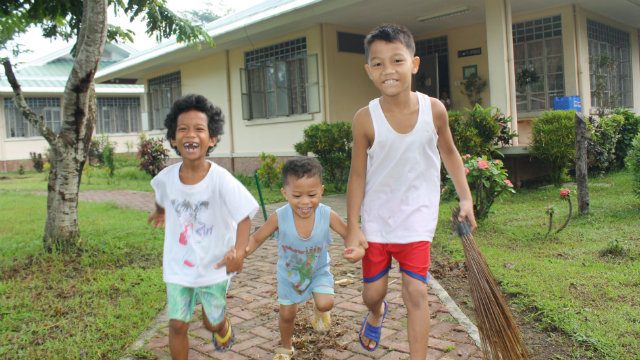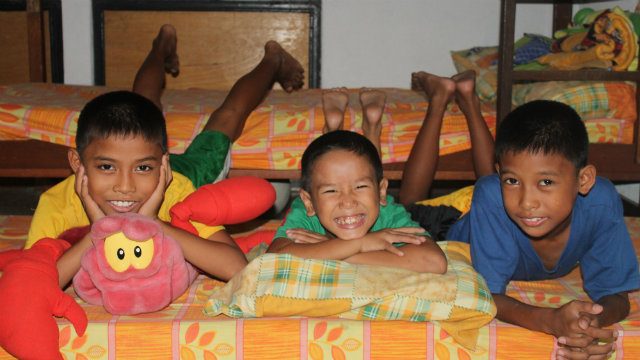SUMMARY
This is AI generated summarization, which may have errors. For context, always refer to the full article.

MANILA, Philippines — The number of children without and at risk of losing parental care are increasing across the Philippines.
Since 2008, these children have been facing more complex issues, according to a recent report by SOS Children’s Villages Philippines, non-governmental organization (NGO).
The report was the result of a series of consultations and dialogues with various stakeholders, including government agencies, local government units, academe, child-focused NGOs, and civil society organizations. It used a rights-based analysis to identify the kinds of children who are without parental care or at risk of losing parental care.
“What was once seen as an economic phenomenon of OFWs is now a social challenge,” said Bienvenido Delgado, SOS Children’s Villages Philippines National Director. “Mothers or fathers leaving the country to work abroad leave their children behind and that creates a social impact that we now have to address.”
“We also found that technology and easy internet access by children and young people, the influence of social media, and the series of natural disasters in the last 5 years may have given rise to these new categories,” Delgado added.
Children who need closer attention include: child drug couriers, underage victims of cybersex and online child pornography, teenage mothers and their children, children of indigenous people (IP), and children with disabilities.
Growing in number
In 2008 alone, there were roughly 3.4 million children involved in the production, sale, and trafficking of drugs, the SOS report revealed.
These children were also in areas heavily affected by disasters such as Samar, Leyte, and Panay Island – which were stricken by Typhoon Yolanda (Haiyan) in November 2013 – as well as Bohol and Cebu, which were hit by an earthquake in the same year.
As of February 2014, around 20,000 to 30,000 young children were also reported to be involved in cybersex and online child pornography. Some of them were pushed into such activities by their own parents or guardians.
“It is assumed that besides the economic factor, the lack of knowledge among parents on the psychosocial ill-effects to young children of online child pornography may be the reason why they allow their children to engage in such activities,” Delgado stressed.
In 2013, girls under 19 years old gave were estimated to give birth to 570 babies every day. This totals to 208,050 babies per year. This means there are 416,100 children at risk – with both the teenage mother and her child at risk of losing parental care.
Around 20-30% of the country’s estimated 5.1 million unregistered children, according to the SOS report, came from IPs who continue to suffer from discrimination and abuse as of 2013.
These children have limited access to basic social services since their families live in remote barangays. Mortality rate among infants and under-5s in IP communities were also revealed to be higher.
Meanwhile, there were 317,460 Filipino children with disabilities as of 2010. Some of these children belong to families who are unable to care for them.
“We believe that our response as a nation should be to watch out for these kinds of violations against children in need,” Delgado said.
Other children in need of support are children living in poverty, living or working on the streets, victims of trafficking and commercial sexual exploitation, and children affected by armed conflict.
Family environment

According to Sarah delos Santos, SOS Children’s Villages Philippines Program Director, the immediate causes of children’s loss of or risk of being deprived of a family environment are events that are specific in every child’s natural family.
“These situations include the death of one or both parents, parental neglect and abandonment, the incapacity of parents due to illness or vices such as drugs or alcohol, imprisonment of one or both parents, abuse, violence, and maltreatment in the family, family breakdown and eventual breakup, and the child’s own initiative to leave home,” explained Delos Santos, who has worked as a social worker for 10 years.
To fulfill its role in addressing the needs of children without or at risk of losing parental care, SOS Children’s Villages Philippines provides home for children who have been orphaned, abandoned, neglected, abused, and living in poverty.
Through its Family-Based Care Program, the Village admits children into one of its houses to join a family that is looked after by an SOS mother.
Meanwhile, to prevent child neglect, abuse, and abandonment, the NGO also conducts Family Strengthening Program to support families even before they break down. This includes interventions like livelihood skills training, income generating projects and parenting sessions for the parents, and educational assistance, psychosocial activities and career development programs for the children.
Echoing SOS Children’s Villages Philippines’ focus on the family, the report has affirmed that strong and stable families are more capable of fulfilling children’s rights and empowering them.
“Both the Convention on Children’s Rights and the United Nations Guidelines for the Alternative Care of Children recognize the primacy of the family in the growth and development of children,” the report stated.
“The best place for the child to grow is in a family environment,” Delos Santos added, explaining that the presence of a loving and caring family is one of the most important requirements for a happy childhood.
To address such problems, the report advised the Philippines to “make the care and protection of children become a major norm and indicator of national development.”
“We should also examine and apply the relevant provisions in the UN Guidelines for the Alternative Care of Children, and we should have an enabling law to implement these guidelines in the Philippines,” Delos Santos continued.
The UN Guidelines for the Alternative Care of Children provides recommendations in determining the necessary and suitable alternative care options for the child. There is, however, a huge lack of public awareness such guidelines.
“The numbers of children in need of a family is a reality we all need to face,” Delgado said. “And the only way to deal with this is through the combined effort of both the public and the professionals in alternative childcare, based on a genuine desire to assist and support these children.”
“All it takes is a more sustained level of commitment from the public through donations, as well as continuous and consistent help from volunteers.” — Rappler.com
For those who want to donate online or help SOS Children’s Village Philippines, please visit their website for their contact details.
Add a comment
How does this make you feel?
There are no comments yet. Add your comment to start the conversation.